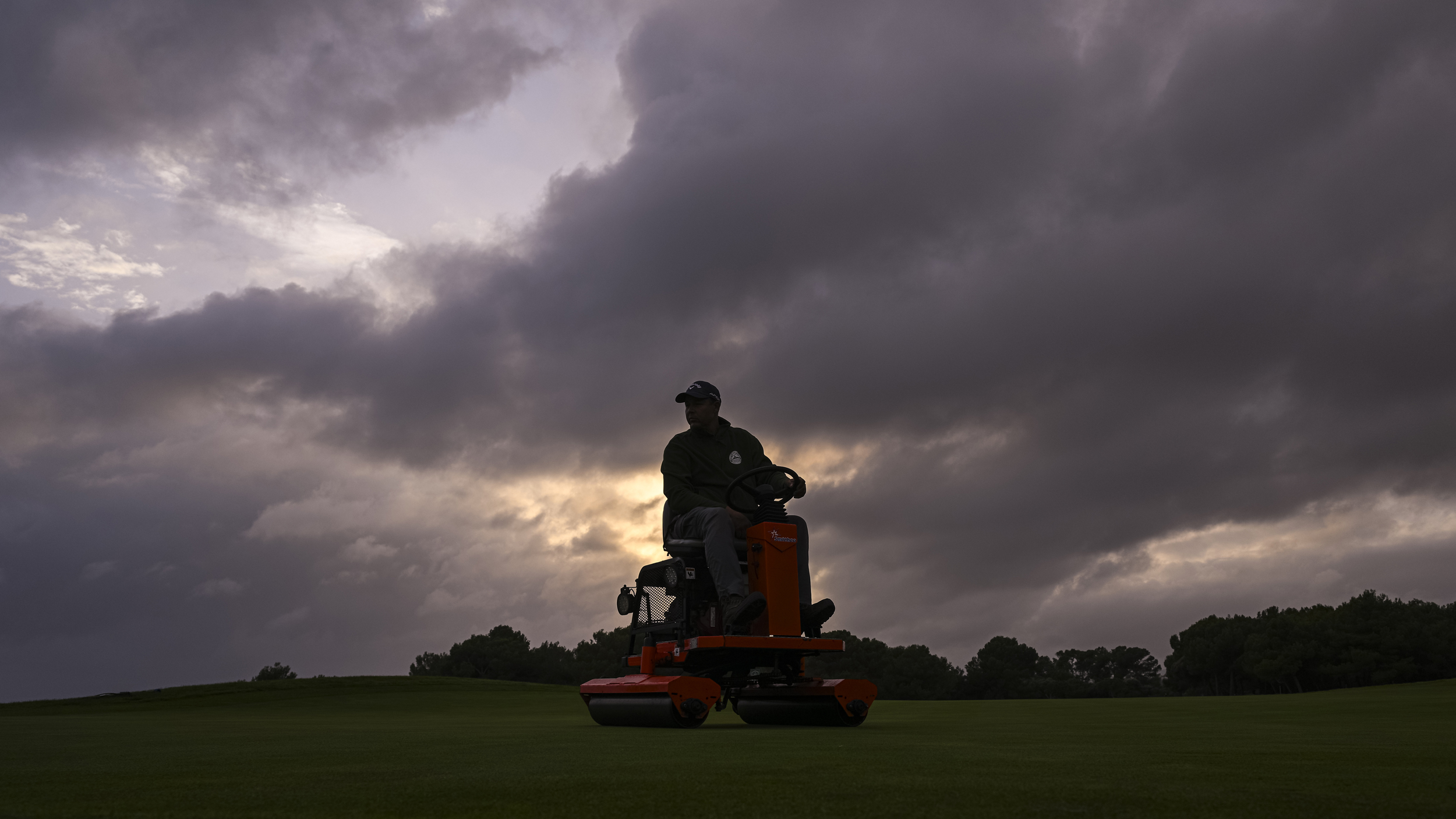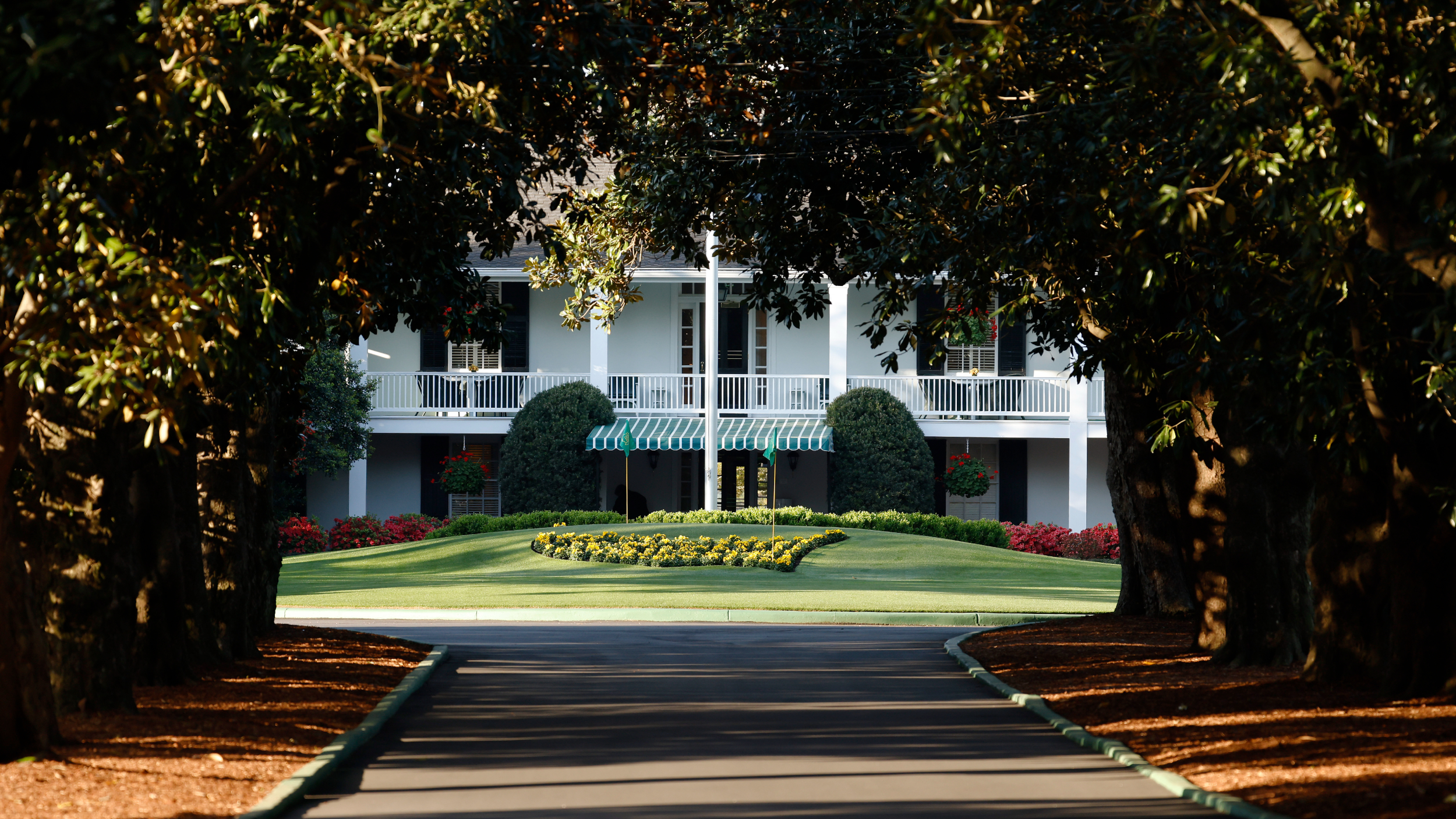An Experienced Greenkeeper Reveals The Key Winter Golf Course Challenges... And How You Can Play Your Part
We talk all things greenkeeping with Formby Golf Club's course manager Joe Barnes


As the last of the autumn leaves fall and the temperature starts to drop, the golf course can start to feel a bit quieter. However, just because most of the season's tournaments have been and gone, it doesn't mean the work tails off for greenkeepers.
The life of a greenkeeper is rarely anything but busy, for there is usually always work going on somewhere – renovations, new projects and course alterations.
Here, Joe Barnes, course manager at Formby Golf Club on England's Golf Coast, gives an insight as to what typically goes on during the autumn/winter period, and talks through some of the challenges he and his team face.
After the summer season, does the job become a bit quieter?
I wouldn’t say it’s quieter. In the UK we’re experiencing milder winters, and golfers want to play 12 months a year; you can put in scores whenever you want – so that has put more pressure on greenkeepers to extend the season and provide a handicap qualifying course as often as possible.
The golf season might feel like it’s finished, as moving into October/November, that’s when renovations tend to start, so the job of a greenkeeper remains busy.
What work will typically get underway as we move into winter?
It depends on the type of course and whether it gets really wet. We’re obviously a links course; we tend to stay quite dry, so we did our overseeding in mid October. There are other projects, too, such as bunker and tee box renovation, and a lot of general aesthetics that might go under the radar.
A parkland course that can get quite wet in autumn might choose to do their overseeding in a busier part of the season, like August. It might cause disruption during prime golfing season, but it means ground conditions are more favorable and with warmer weather the grass seed germinates quickly, so playing surfaces can return to normal within a week or so.
Get the Golf Monthly Newsletter
Subscribe to the Golf Monthly newsletter to stay up to date with all the latest tour news, equipment news, reviews, head-to-heads and buyer’s guides from our team of experienced experts.
What are some of the pressures you face at this time of year?
It’s mainly disease pressure because growth is slowing down. If you get disease through the summer, you know you’ve got strong growth in the grass plants, so it will outgrow disease most of the time.
At this time of year, with the temperatures dropping, the pathogens are still active, so they can take hold of the grass plant. It can kill off the grass plant and leave you with scarring until spring. Less daylight and damper days fuel disease.
Can that be overcome with treatment?
We can apply products to turf to try and dry the surface out and stop pathogens taking hold. The final tool in our armory would be a fungicide, but that would be the last resort when disease conditions are persistent.
Is that because it’s been revoked?
Chemical use is not great for soil microbial activity and the environment in general, and you are only allowed to use some of them so many times a year – maybe as little as once in 12 months. So you can’t become too reliant on them; we all need to find different ways to overcome it.
Sustainability is obviously a challenge facing the whole industry…
It is. Some countries have stopped fungicide use altogether on golf courses. It’s much like the problems we have here with leatherjackets – we don’t have the chemical use we used to. We have got to find different ways of moving forward and being more sustainable in terms of what we put onto the golf course.
Sustainability comes in different forms, too. Financially, it doesn’t make sense for clubs to be putting aside £10,000 of their budget for fungicides every year. In my opinion, that £10,000 would be much better spent on seed to produce a surface that isn’t as reliant on fungicide.

Where do you stand on bunkers? They also put a strain on resources…
Play the ball as it lies – that’s the way it used to be. Bunkers tended to be areas where animals were scraping about. When I started at Royal Lytham & St Annes there were 205 bunkers. That number is now around 170.
You certainly want bunkers on a links course, but I don’t think there’s a need to have a silly number. It’s not just the day-to-day maintenance that is time consuming and expensive, it’s the rebuilding and the purchasing of revetting turf.
How long do you get out of a revetted bunker?
On average, I’d say about three to five years. There are quite a few factors involved, not least the amount of play. Also, whether the bunker is south facing. If the face of the bunker is in the sun all day, it will degrade quicker.
As greenkeepers, we try and shape the sand so the ball falls back into the center – certainly for general play. If golfers are up against the face constantly, that’s also going to degrade them a lot quicker.
Let’s say that you’ve got 150 bunkers with each one needing to be rebuilt every three years at a cost of approximately £1,000 – that’s a lot of money! That figure can be reduced if you are able to harvest your own turf on site, but it remains a large strain on the greenkeeping team.
What sort of weather do you hope for over winter?
If you’re doing a fair bit of turfing you wouldn’t want it completely dry. We will try and do most of our turfing over this side of Christmas, so it’s well rooted and ready for the start of the season in April.
I’d want a little bit of rain here and there. In the summer, I’d love a bit of rain every evening so we don’t have to turn on the irrigation system.
Once we start seeing frost, the disease pressure stops because the pathogens won’t be active in those temperatures. There are fewer pest incidents, too, and the worm casting reduces.

Does frost cause a problem?
Golfers might not like me for saying this but heavy frost isn’t too bad for us greenkeepers – it reduces disease pressure! With winters becoming milder, courses never seem to stop growing. We don’t want to see too many hard frosts, but the odd leaf frost isn’t so bad – just so golfers can get a tee peg in the ground.
Is there a risk of damage being caused to the course when there’s a hard frost?
The problem is when the top inch of the turf thaws, but underneath it’s frozen. Then you can get root shear. The ground may move when weight is transferred on the surface and the roots break. Suddenly those roots that you have worked so hard to develop have gone from six inches to an inch.

You must breathe a sigh of relief when temporary greens come into play?
There is actually a debate as to whether long-term damage gets caused when playing on frozen surfaces. I don’t think anyone truly knows the answer. I’ve seen greens played on in freezing conditions and they can be completely fine; however, I believe when experiencing extremes of any form of weather it is prudent to protect the most vulnerable areas, and due to cutting height, that is the greens.
What are some of the other challenges you face over winter?
Worm casts. There is nothing on the market to treat them. When the worms come to the surface they leave behind little deposits. It’s a pain, but worms do have a massive benefit, too, because of how they aerate the soil. With an area of heavy worm casts it’s extremely difficult to produce a good quality surface. Again, we can’t use chemicals.

How can golfers help look after the course at this time of year?
I might sound like a broken record, and this applies all year round, number one is repairing pitch marks correctly. In winter the softer greens are more susceptible to pitch marks.
A lot of advice is just your standard course etiquette, such as replacing divots and raking bunkers, which has nothing to do with the time of year. I know some golfers might think it’s the greenkeepers’ job, but if you do your bit it means we can spend time working on other jobs.
Do you worry about fairways getting churned up?
Fairways are generally easier to manage. The biggest concerns are the greens, because that’s what a lot of golfers base their perception of a golf course on. Having nice tees and nice fairways are important great, but number one is the greens. Because they are more intensely managed and they are mown a lot lower, the grass is more susceptible to damage.

Can golf trolleys cause damage?
Winter wheels definitely help. What we find with those who don’t use winter wheels, is the wheels can hold on to worm casts and debris; then if they spin on the fairway you’re left with large deposits, which doesn’t look great. It doesn’t do the quality of cut on mowers any favors if there’s debris on the surface either.
With a lot of renovations taking place, it can often mean we direct golfers down certain routes as well – so it’s important to stick to the correct paths. We want to protect paths that get wet and are vulnerable to being cut up.
Do robots have the potential to make your job easier?
Yes, a lot of courses are already making use of autonomous mowing and I’m only hearing good things. They’ve already got driverless cars in the States, so technology is advancing at a rapid rate!
You could set them to go all night because they don’t make any noise. You then come in the next day and a lot of your mowing is already complete, leaving you to just polish it up. It would also put less strain on your more traditional mowing machinery.
Would that put greenkeepers’ jobs at risk?
You can always find room for another greenkeeper in your team. If you ended up with a robot or two, you’d just end up being able to achieve more with the staff you’ve got.
So I wouldn’t worry about that. The bonus would be that you could free up greenkeepers to elevate the standard of course even higher, and there will always be some jobs that even robots can’t do – at least not without the help of a human!

Michael has been with Golf Monthly since 2008. A multimedia journalist, he has also worked for The Football Association, where he created content to support the England football team, The FA Cup, London 2012, and FA Women's Super League. As content editor at Foremost Golf, Michael worked closely with golf's biggest equipment manufacturers and has developed an in-depth knowledge of this side of the industry. He's a regular contributor, covering instruction, equipment, travel and feature content. Michael has interviewed many of the game's biggest stars, including seven World No.1s, and has attended and reported on numerous Major Championships and Ryder Cups around the world. He's a member of Formby Golf Club in Merseyside, UK.
-
 What You Get For Finishing Second At The Masters
What You Get For Finishing Second At The MastersFinishing runner-up at The Masters is sure to bring disappointment, but there are plenty of reasons for the player who misses out to be cheerful too – here are the details
By Mike Hall Published
-
 Dear Masters Tournament Committee: Please Change The Final-Round Pin Positions On 16 And 18
Dear Masters Tournament Committee: Please Change The Final-Round Pin Positions On 16 And 18The back nine at Augusta National on Masters Sunday is scintillating, but I’ve been campaigning for different pin positions on 16 and 18 for years...
By Nick Bonfield Published